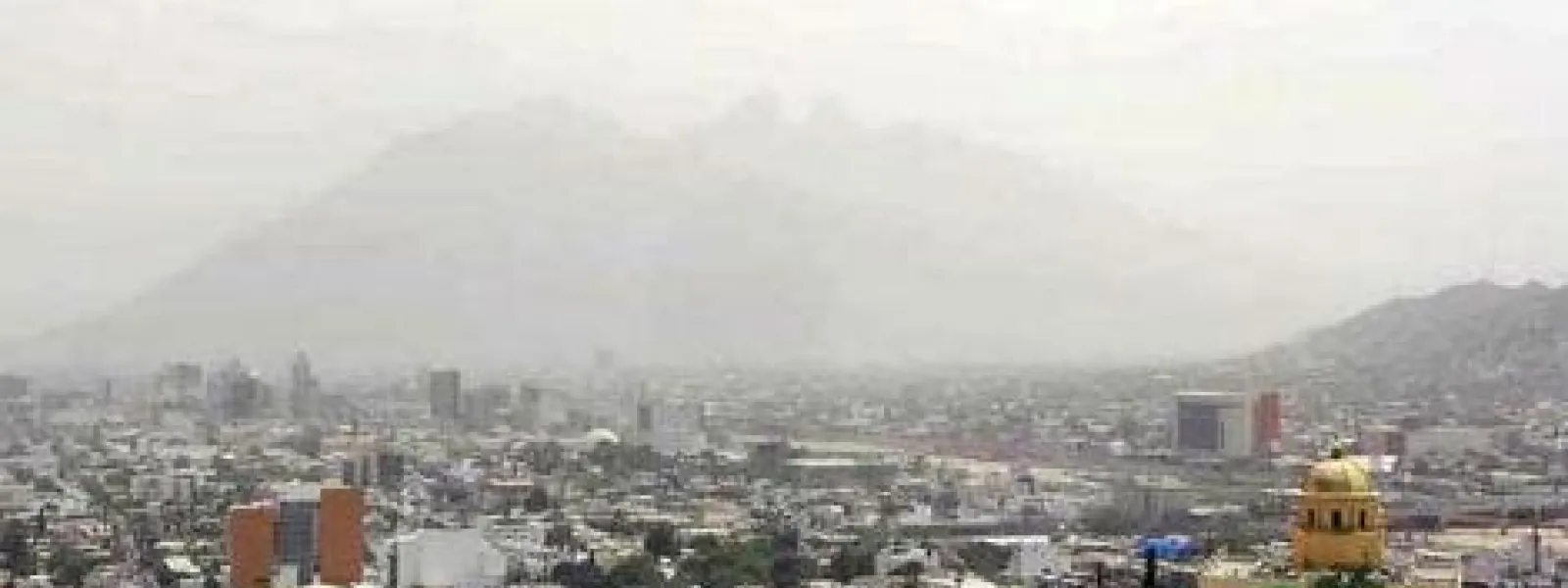
Air pollution in Latin America and its effect on our health and climate
Source: El Norte/redesquintopoder.comBy Héctor Herrera, AIDA legal advisor and coordinator of the Network for Environmental Justice in Colombia, @RJAColombia
According to the latest report from the Clean Air Institute, Monterrey, Guadalajara and Mexico City (Mexico), Cochabamba (Bolivia), Santiago (Chile), Lima (Peru), Bogota and Medellin (Colombia), Montevideo (Uruguay) and San Salvador (El Salvador) are 10 most polluted cities in Latin America. In all of them, the level of air pollution exceeds World Health Organization recommendations.
The scene is similar in big cities across the region: buses and trucks spew out black smoke as people walk under grey skies.
This is the backdrop in The Sound of Things Falling, an award-winning novel by Colombia’s Juan Gabriel Vásquez in which descriptions like this abound:
“On the corner of Carrera Cuarta, the heavy afternoon traffic was moving slowly, in single file, toward the exit on to Avenida Jiménez. I found the gap in the traffic I needed to cross in front of a small bus whose recently illuminated headlights were catching the dust from the street, the smoke from exhaust pipes and the beginnings of a light drizzle.”
Vásquez is writing about Bogota. But he could just as easily have been describing Monterrey or San Salvador. Residents of Latin America’s big cities live enveloped in smog. They breathe in the microparticles of black carbon, ozone, nitrogen dioxide and sulphur dioxide that comes with the air polluted by urban transport, industry and power plants.
We can get riled up when a passing truck spits a cloud of smoke in our face. But our outrage fades almost as soon when we think that making these vehicles more environmentally friendly is not our responsibility. Those decisions lie out of our reach in the hands of politicians and bureaucrats.
Even so, we must understand that air pollution is a problem that affects all of us and so it is important to be aware of the associated health risks. THE Clean Air Institute's report explains how breathing in air containing a high concentration of pollutants can reduce our quality of life and lead to illness or premature death. Thankfully, the report also makes recommendations on how to avoid this.
Worryingly, public health is not the only casualty of air pollution. Another is a faster pace of climate change
Black carbon and ozone are short-lived climate pollutants (SLCPs) that remain in the atmosphere from days to decades. While that is nothing compared with carbon dioxide, which remains in the atmosphere for more than a century, SLCPs contribute more to climate change than carbon dioxide.
This means that if we were to significantly reduce SLCP emissions, we would get quick results in slowing climate change. You can find more information on AIDA’s page on SLCPs, including descriptions of the main pollutants and the steps being taken to encourage a reduction in their emission.
All of what has been said here becomes particularly pertinent when you consider that the population and number of vehicles in Latin America is growing steadily, which unfortunately is not the case for the number of measures being introduced to reduce the level of air pollutants.
Whatever our motives – whether this is to improve public health, slow climate change, protect our lungs or those of future generations, or even to simply enjoy a picturesque sunset without a wall of harmful gases blocking our view of the sea or the mountains, one thing is imperative. We must work so that the air in our cities across the Americas is clean and fresh.
Héctor Herrera Santoyo

Héctor Herrera Santoyo holds a law degree from the Universidad de los Andes, where he also studied Anthropology and was part of the program Global Justice and Human Rights. He is currently working with AIDA as coordinator of the Network for Environmental Justice in Colombia.
